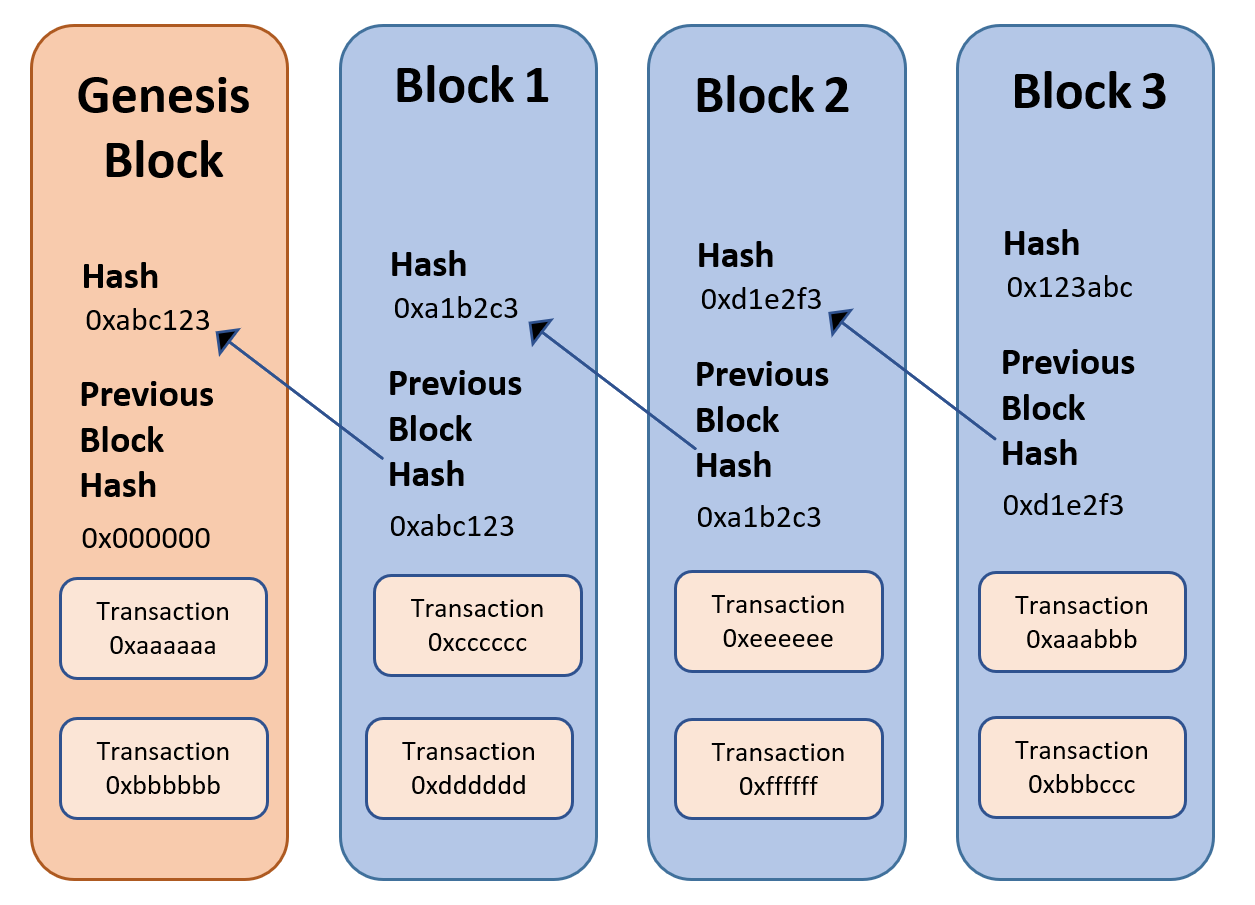Blockchain and Ethereum architecture
Blockchain is an architecture comprising multiple components and what makes blockchain unique is the way these components function and interact with each other. Some of the important Ethereum components are Ethereum Virtual Machine (EVM), miner, block, transaction, consensus algorithm, account, smart contract, mining, Ether, and gas. We are going to discuss each of these components in this chapter.
A blockchain network consists of multiple nodes belonging to miners and some nodes that do not mine but help in execution of smart contracts and transactions. These are known as EVMs. Each node is connected to another node on the network. These nodes use peer-to-peer protocol to talk to each other. They, by default, use port 30303 to talk among themselves.
Each miner maintains an instance of ledger. A ledger contains all blocks in the chain. With multiple miners it is quite possible that each miner's ledger instance might have different blocks to another. The miners synchronize their blocks on an on-going basis to ensure that every miner's ledger instance is the same as the other.
Details about ledgers, blocks, and transactions are discussed in detail in subsequent sections in this chapter.
The EVM also hosts smart contracts. Smart contracts help in extending Ethereum by writing custom business functionality into it. These smart contracts can be executed as part of a transaction and it follows the process of mining as discussed earlier.
A person having an account on a network can send a message for transfer of Ether from their account to another or can send a message to invoke a function within a contract. Ethereum does not distinguish them as far as transactions are considered. The transaction must be digitally signed with an account holder's private key. This is to ensure that the identity of the sender can be established while verifying the transaction and changing the balances of multiple accounts. Let's take a look at the components of Ethereum in the following diagram:

How are blocks related to each other?
In blockchain and Ethereum every block is related to another block. There is a parent-child relationship between two blocks. There can be only one child to a parent and a child can have a single parent. This helps in forming a chain in blockchain. Blocks are explained in a later section in this chapter. In the following diagram, three blocks are shown—Block 1, Block 2, and Block 3. Block 1 is the parent of Block 2 and Block 2 is the parent of Block 3. The relationship is established by storing the parent block's hash in a child's block header. Block 2 stores the hash of Block 1 in its header and Block 3 stored the hash of Block 2 in its header. So, the question arises—who is the parent of the first block? Ethereum has a concept of the genesis block also known as first block. This block is created automatically when the chain is first initiated. You can say that a chain is initiated with the first block known as the Genesis Block and the formation of this block is driven through the genesis.json file. Let's take a look at the following diagram:

The following chapter will show how to use the genesis.json file to create the first block while initializing the blockchain.
How are transactions and blocks related to each other?
Now that we know that blocks are related to each other, you will be interested in knowing how transactions are related to blocks. Ethereum stores transactions within blocks. Each block has an upper gas limit and each transaction needs a certain amount of gas to be consumed as part of its execution. The cumulative gas from all transactions that are not yet written in a ledger cannot surpass the block gas limit. This ensures that all transactions do not get stored within a single block. As soon as the gas limit is reached, other transactions are removed from the block and mining begins thereafter.
The transactions are hashed and stored in the block. The hashes of two transactions are taken and hashed further to generate another hash. This process eventually provides a single hash from all transactions stored within the block. This hash is known as the transaction Merkle root hash and is stored in a block's header. A change in any transaction will result in a change in its hash and, eventually, a change in the root transaction hash. It will have a cumulative effect because the hash of the block will change, and the child block has to change its hash because it stores its parent hash. This helps in making transactions immutable. This is also shown in the following diagram:













































































